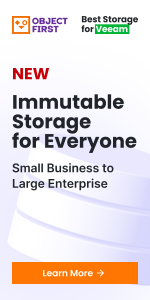Cloud technology was a vital lifeline for organisations disrupted by Covid-19. For many it was all that kept the lights on, allowing them to quickly build and scale their remote services and operations. Accenture’s recent Technology Vision 2021 report found that 82% of organisations are ramping up their use of cloud in a direct response to the pandemic.
However, as businesses look to recover from the crisis the conversation has changed around cloud. Enterprises operating during the crisis are seeing that cloud offers more than just cost savings. Instead, it can be a path to more agile business models, faster speed to market, and even greener operations. We’re moving on from the goal of ‘lift and shift’, where the cloud is just a new home for the data centre.
But getting this sort of value from cloud has thus far proven difficult for many companies. In fact, only 37% of companies say they are achieving the full value expected on their cloud investments.
A vision without a strategy remains an illusion
The way to scale cloud adoption sounds simple: migration. But narrowly focusing on migration in the rush to ‘do more digital transformation’ can trap organisations in the ‘lift and shift’ mindset, where the goal is moving greater volumes of workloads and expecting the results to follow.
Enterprises must first set out the business strategy and value behind their migration, including clear definitions of where they are, and where they want to be. As a CIO driving the cloud agenda, you can have a great role in ensuring cloud technology is an enabler to business transformation. Cloud can offer greater agility, for example, but how will this agility help the business deliver new products or services? How will it change their customer experience?
Migration strategies that look at how the cloud can enable the business to operate differently with the new tools, services, and capabilities on offer can be far more successful than strategies that look to rearchitect what they already have. These organisations entwine their technology strategy with the business strategy, understanding how a cloud-first operating model can help them achieve their goals.
Businesses will also need to consider how other technologies can be part of their investment. For example, IoT, AI and robotics are critical to gathering, deciphering, and actioning data across the cloud.
Execution is what brings strategy to life
The practical implementation of a cloud strategy isn’t always easy, but breaking it down into achievable goals, and creating a systematic plan which demonstrates how every workload will deliver value will enable sustained progress.
Cloud migrations are incremental and influenced by factors such as value, complexity, and risk. IT leaders will need to consider each area of the business and map them by requirement. For example, are some areas subject to stricter regulations and compliance, or do your business-critical workloads have tougher technical requirements? Are certain applications interdependent? Would other workloads benefit from cloud bursting? This will also help inform the sort of cloud services your organisation requires for different workloads, whether that be hybrid infrastructure as a service (IaaS), platform as a service (PaaS) or software as a service (SaaS).
Underpinning many of the capabilities that will transform operations is data. Despite this, migration planning often focuses on applications. However, it’s essential to consider the interdependencies between architecture, data, and applications. As enterprises shift their data “centres of gravity” away from on-premise data centres and to the cloud, they must also build modern data platforms into their strategic migration plans, creating bundles of related workloads which can be migrated together.
While the priority might be how cloud can enable a long-term business strategy, cost is still a key consideration that can put the brakes on the journey if disregarded. IT teams need to be smart about choosing a few ‘quick win’ projects which can be delivered rapidly. Doing so will help them to fund those bigger, more complex ones.
Don’t go it alone
When it comes to executing the strategy, security teams need to be deeply involved in migration from the planning and onset too, defining platform-level and application-level controls, approving cloud architecture choices, and identifying the best candidates for native security automation.
Finally, employees and external customers will need to adapt to new systems and receive training to ensure they can make the most of the new tools, platforms, and services available to them in the cloud. Simply telling employees about the benefits of the cloud isn’t enough. IT leaders must help everyone in the business to think like a technologist, spotting opportunities to use these new tools to make their work easier or more efficient.
Beyond migration
While migration is the essential first step in maximising cloud value, it’s only the start of the journey. Nonetheless, the decisions that organisations make at the start will define what they’re able to achieve in the future. It’s important that organisations choose the right partner to go on this journey with. But how do leaders ensure they’ve picked the right one?
Editor’s note: This is the first of a series of articles from Accenture around the cloud migration journey. The second article, due to be published in May, will look at how leaders ensure they have picked the right partner.
Photo by Marc-Olivier Jodoin on Unsplash

Want to listen to senior executives and thought leaders around enabling digital transformation for your business? Register for Digital Transformation Week, April 20-22.







